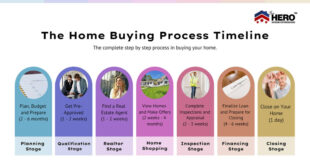Rural Development Loan Rates: Your Comprehensive Guide. Rural development loans provide essential financial assistance for individuals looking to purchase homes in rural areas. These loans, often backed by government programs, make homeownership accessible by offering competitive interest rates and flexible terms. Understanding the rates, benefits, and application process is crucial for anyone considering this option.
What Are Rural Development Loan Rates?
Rural development loan rates refer to the interest rates applied to loans designed for rural housing. These rates are often lower than conventional loan rates, as the loans are backed by the government, such as the USDA (United States Department of Agriculture). Borrowers typically enjoy lower monthly payments and fewer upfront costs.
Factors Affecting Rural Development Loan Rates
Several factors influence rural development loan rates, including:
- Credit Score: A higher credit score often secures a lower interest rate.
- Loan Term: Longer loan terms may have higher rates.
- Market Conditions: Economic trends and federal interest rates affect loan rates.
- Loan Amount: Larger loans may have slightly varied rates.
- Location: The property’s rural designation can influence eligibility and rates.
Benefits of Rural Development Loan Rates
- Low-Interest Rates: Competitive rates reduce overall borrowing costs.
- No Down Payment: Many rural loans require no down payment.
- Flexible Credit Requirements: Suitable for borrowers with less-than-perfect credit.
- Government Backing: Reduces risk for lenders, translating to better terms for borrowers.
- Inclusive Eligibility: Supports low-to-moderate-income families.
How to Qualify for Competitive Rural Development Loan Rates
To secure the best rural development loan rates, consider the following steps:
- Improve Your Credit Score: Aim for a credit score of 640 or higher.
- Save for Closing Costs: Although no down payment is required, closing costs still apply.
- Choose a Qualified Property: Ensure the property meets USDA eligibility criteria.
- Work with Approved Lenders: Partner with lenders experienced in USDA loans.
- Maintain Stable Income: Consistent income demonstrates repayment capability.
How to Apply for Rural Development Loans
The application process involves:
- Prequalification: Assess eligibility with a lender.
- Property Selection: Choose an eligible home in a USDA-designated area.
- Document Submission: Provide proof of income, credit history, and other details.
- Loan Approval: Wait for the lender and USDA to approve the loan.
- Closing: Complete the purchase and move into your new home.
Pros and Cons of Rural Development Loan Rates
Pros:
- Affordable housing in rural areas.
- Minimal upfront costs.
- Support for low-to-moderate-income families.
Cons:
- Restricted to eligible rural properties.
- May require USDA approval, leading to delays.
- Income limits may disqualify some applicants.
Top 10 Tips for Navigating Rural Development Loan Rates
- Check Your Credit Early: Monitor your score and address errors.
- Research Eligible Areas: Confirm if your desired location qualifies.
- Compare Lenders: Seek competitive rates and terms.
- Understand USDA Guidelines: Familiarize yourself with requirements.
- Plan for Additional Costs: Budget for insurance, taxes, and maintenance.
- Consult a Mortgage Advisor: Seek expert guidance.
- Read the Fine Print: Understand all loan terms and conditions.
- Gather Necessary Documents: Expedite the application process.
- Be Patient: USDA approval may take time.
- Keep Up with Market Trends: Monitor changes in interest rates.
10 FAQs About Rural Development Loan Rates
- What are the typical interest rates for rural development loans? Rates vary but are often lower than conventional loans.
- Are rural development loans available nationwide? No, they are restricted to USDA-designated rural areas.
- Can I refinance a rural development loan? Yes, refinancing options are available to lower rates.
- Is a down payment required? No, most rural development loans require no down payment.
- What credit score do I need? A score of 640 or higher is recommended.
- Are there income limits? Yes, the program is for low-to-moderate-income families.
- How long does approval take? The process may take 30 to 60 days or longer.
- Can I use the loan for a second home? No, it’s designed for primary residences only.
- What fees are associated with the loan? Expect closing costs, insurance, and potential guarantee fees.
- Are there alternatives to USDA loans? Yes, consider FHA or VA loans for other government-backed options.
Conclusion
Rural development loans offer an excellent opportunity for affordable homeownership in rural areas. By understanding loan rates, eligibility criteria, and application steps, you can navigate the process confidently. With government backing and competitive interest rates, these loans make homeownership accessible to many families.
Whether you’re looking for a new home or exploring refinancing options, rural development loans provide a path to achieving your goals. Take the first step today and discover how these loans can benefit you.
 mortgage.kbk.news
mortgage.kbk.news
